The journey of portable audio began over a century ago with the invention of the phonograph by Thomas Edison. Since then, we have witnessed a remarkable evolution, marked by the introduction of gramophones, transistor radios, cassette players, CD players, and finally – pocket-friendly MP3 players. Each iteration brought forth new capabilities, pushing the boundaries of portability, audio quality, and convenience.
The quest for portable HiFi has been a constant journey for me and it’s still a BIG part of my life. The arrival of MP3 players pushed things further, offering entire music libraries condensed into a pocket-sized device. But for serious audiophiles, the quest for true high-fidelity sound on the go remained unfulfilled.
Enter the Digital Audio Player (or DAP for short) invented some ~15 years ago capable of lossless music playback that no longer relied on a do-it-all ultra-low voltage SoC for D/A conversion and analog amplifier duties, but on dedicated electronics, which further improved sound quality, at times even challenging desktop components and blurring the line between portable and desktop HiFi as we know it. These dedicated music players prioritize audio quality above all else, employing much better components and meticulous engineering to deliver a listening experience that rivals high-fidelity home stereos.
Up until now, DAPs have relied on two main technologies for their Digital-to-Analog Converters (DACs for short): chip-based solutions from the likes of AKM, ESS, Cirrus Logic & others. Much later on, Resistor-Ladder DACs (R2R) made an appearance in such devices from the likes of Cayin and HiBy. While both offer an excellent sound from any point of view, they still have their limitations. Chip-based DACs can be extraordinarily efficient but may introduce unwanted colorations to the sound, especially in the treble region. R2R DACs, on the other hand, are known for their overflowing liquidity, great tonal balance, and 3D sound, but their ultra-complex design can be expensive and power-hungry.
The HiBy R8 II, however, shatters all of these limitations, entering a new era of portable HiFi with the world’s first FPGA-based DAC implementation, which they are calling Darwin-MPA (Multiphase PWM Array). If this reads like some rocket science, then in simpler terms a Field-Programmable Gate Array (FPGA) acts as a blank canvas, allowing audio engineers to custom-design the digital processing circuitry for the ultimate in sound optimization. This approach bypasses the limitations of off-the-shelf DAC chips and the complexities of traditional R2R designs. The result is a level of control and precision never before achieved in portable DAPs.
The benefits of the HiBy R8 II’s custom nature extend far beyond mere technical bragging rights and it seems that the R8 II isn’t just another evolution in portable audio; but a true revolution for those who demand the absolute best from their music on the go. Beyond its unorthodox DAC section, the HiBy R8 II boasts an impressive array of features designed to impress audiophiles and music enthusiasts alike. Its sleek, ergonomic design is complemented by a vibrant touchscreen display, and intuitive user interface, that includes custom plugins and even a parametric EQ! Add extensive connectivity options and before you can say, Jack Robinson, it instantly becomes a powerful multimedia machine on the go.
After releasing their TOTL RS8 which impressed me dearly, that included all the knowledge and engineering skills HiBy gathered over the years, they were able to build a custom headphone amp stage, made from 2 driver op-amps and 16 custom transistors biased into either Class-AB or full Class-A operation, which makes the HiBy R8 II stand out from the (over)crowded landscape that is portable audio. The best part? They were able to trickle down the technology used in the RS8 into a more affordable DAP, slashing thirteen Benjamin Franklins for a more humane $1999 price tag. But enough talk! We’re itching to delve deeper into this music-making machine. Buckle up as I unbox the HiBy R8 II and explore its inner workings – a testament to the ongoing evolution, or perhaps even revolution, of portable HiFi.
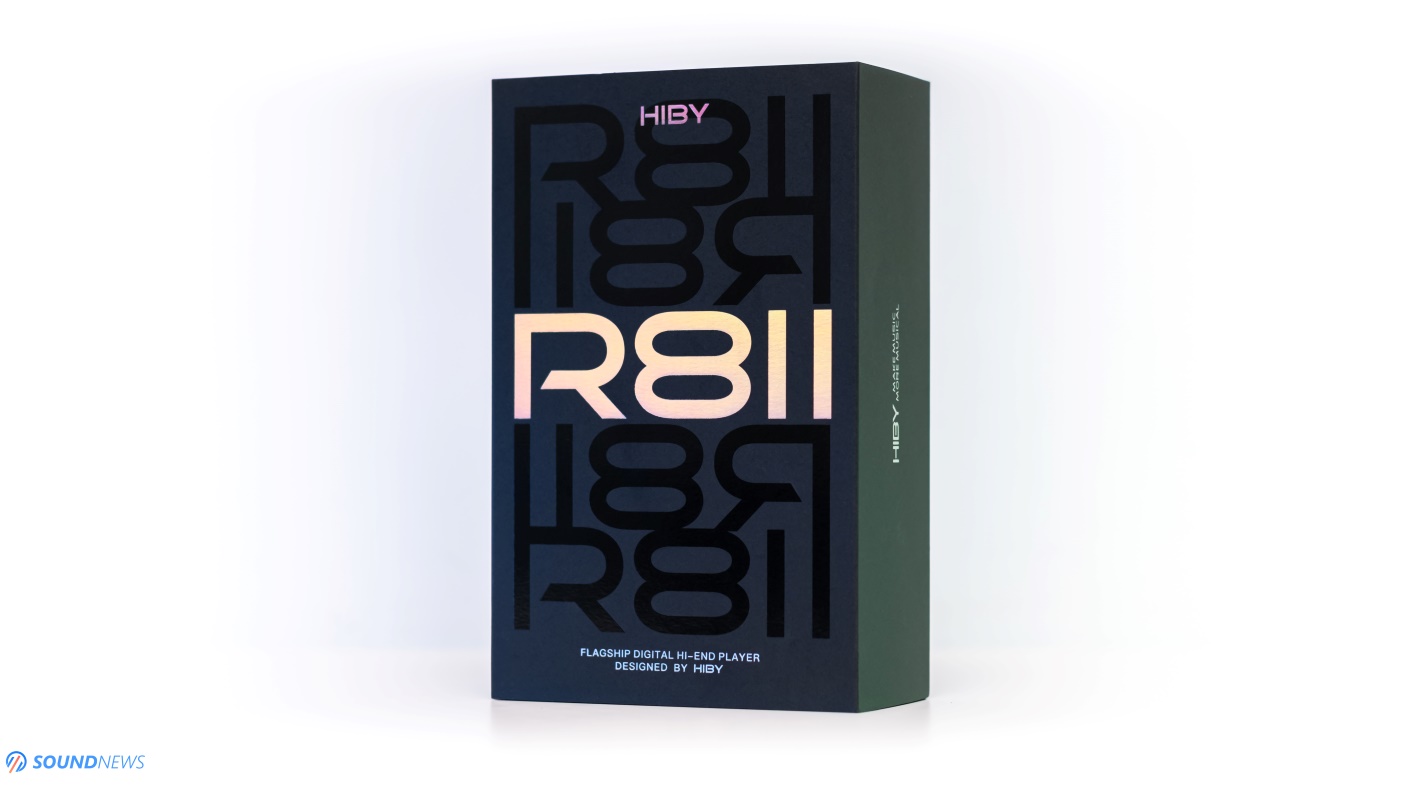
Unboxing Experience
As befitting a co-flagship from HiBy, the R8 II boasts not just double-boxed protection, but an unboxing experience that lives up to its premium status. Lifting the lid unveils a bold statement: Make Music More Musical – a motto that instantly resonates with any music lover.
The first box reveals the R8 II itself, nestled securely within a bed of thick foam. Beneath it lies an accessory compartment housing a high-quality TPU case. While the R8 II’s stainless-steel body is built to withstand minor bumps, basic maintenance is still key. For the commuting audiophile, the included case is a must-have. It fits the R8 II like a glove, shielding it from scratches and accidental tumbles.
But this TPU case goes beyond the ordinary. It’s noticeably thicker and softer than your typical silicone offering, with Alcantara material lining the sides. This Alcantara not only enhances durability but also resists stains – a thoughtful touch for everyday use. As of now, there aren’t any third-party cases available for the R8 II, and frankly, I don’t see the need. The pre-installed case exudes a premium look and feel, making aftermarket options seem redundant. However, if you’re the type who likes a spare, HiBy does offer additional TPU cases in black, blue, or red for a separate $49 (link included for your convenience).
A second accessory box holds a USB Type-C cable, an extra screen protector, a warranty card, a quality certificate, and a helpful quick start guide. This guide even includes cleaning and maintenance instructions specifically for Alcantara, ensuring your R8 II retains its beauty for years to come.
That’s everything you’ll find! Just add a hefty microSD card or connect wirelessly to your favorite streaming service, and you’ll be ready to embark on a sonic adventure in no time.
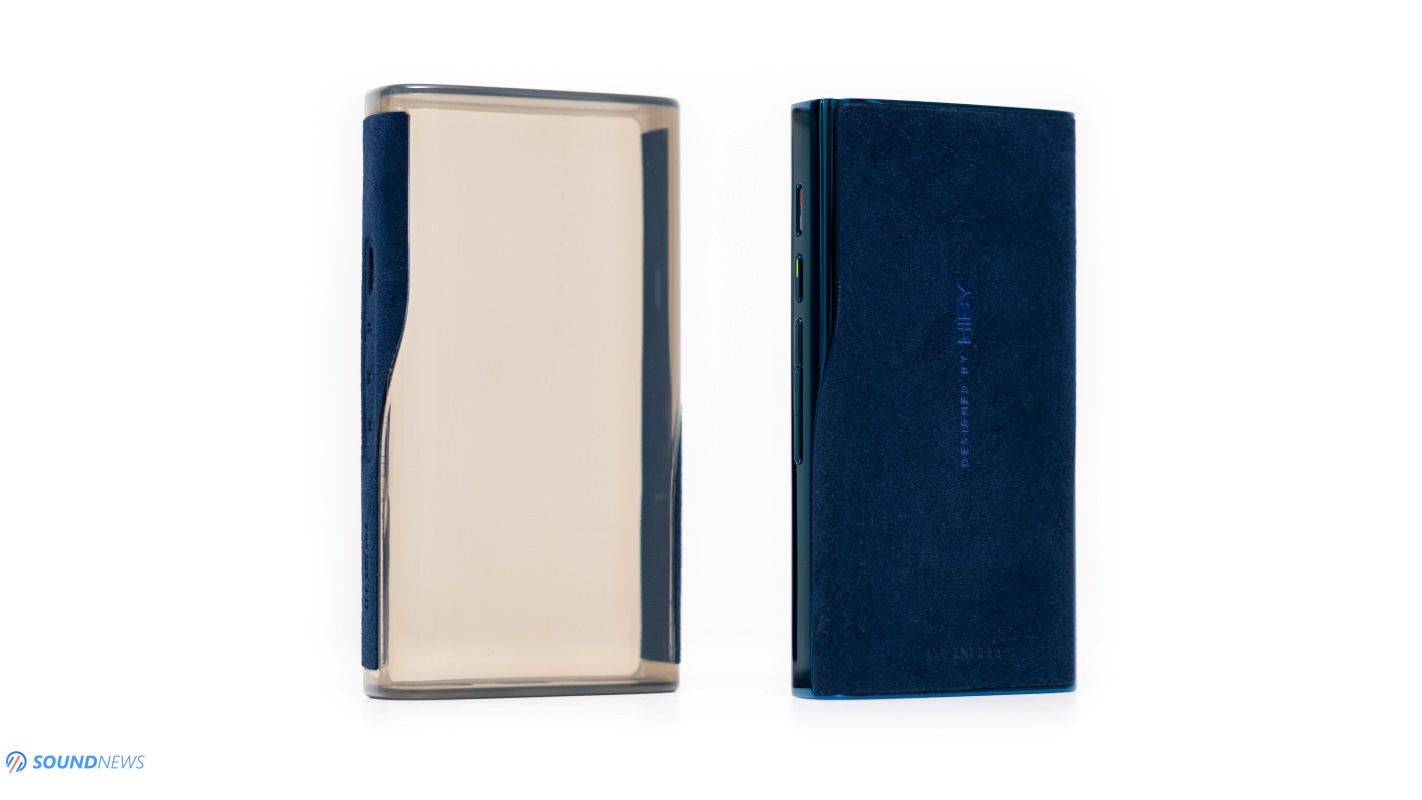
Design & Build Quality
Remember the HiBy R6 PRO II that came forward with a bold and unusual design? It seems that HiBy is once again trying to reinvent itself with even bolder design choices. Having a CNC machined case carved from a single block of steel isn’t something new, but having an Alcantara back…will surely raise some eyebrows in close audiophile gatherings. It does look like a modern smartphone when looking directly, having much slimmer bezels all around, dropping one of the most iconic features of modern portable DAPs – the volume wheel. Another bold gamble of HiBy, but you know the saying – fortune favors the bold and I hope people will appreciate the understated and streamlined look of the R8 II.
When I’m looking directly at it, I have no idea why I’m thinking about luxurious cars that have Alcantara interiors and flashy paint jobs on their exterior, smooth curves all around, removing eye strain and inducing relaxation more than anything else. This vibe emanates strongly within the R8 II and I must give credit to the people who thought outside the box, coming up with such a simple, yet rad design, which is pleasing to my eyes. The loaner unit came in a bright blue color scheme, you can have it in burgundy red or in a shiny stainless-steel look, which colors the Alcantara in a matte-black paint. I’m a simple person and I like shiny white things when shopping for electronics, but with this particular unit, I believe you have to choose between Morpheus’s red or blue pills. Its striking and catchy design demands bright colors that would stand out from the crowd and since blue is more to my liking, this is what I’ve got.
Besides its gorgeous stainless-steel body, you’ll find a glass sheet on its faceplate, cut to its body shape. We are dealing with a bigger-than-usual 5.9” 1080p screen that makes a stunning first impression. After swiping that screen hundreds of times and playing tunes for about 3 weeks now, I fell in love with its minimalist layout, never missing a button when going outside for a stroll. I have big hands and finding and pressing blindly the next or the previous buttons on a FiiO M17 wasn’t a big deal, but I’m sure most would find it bulky and quite a burden on long or short trips. At 515 grams, the R8 II is currently their second heaviest DAP, outweighed only by the RS8, but it’s still considered heavy by DAP terms, being longer, heavier, and bulkier versus any of their previous models.
I won’t beat around the bush when it comes to HiFi – I like the heavy-duty stuff, the heavier – the better. Although it has a longer body sitting near a HiBy RS8, it is still as comfortable to hold, thanks to smoother lines and a much tighter grip provided by the Alcantara. At 515 grams, it will be felt in a tight pocket and maybe it would be wiser to move everything else into your other pockets that might scratch its surface. While FiiO’s M17 and xDuoo’s XD05 PRO were barely squeezing into my jeans, the R8 II goes in and out without a hitch. If you’re familiar with HiBy’s layout, then RS8 would feel at home as you’ll need exactly one minute to figure out all of its buttons, inputs, and outputs and I wish other DAP manufacturers offered the same (short) learning curve. Try doing that with the latest FiiO devices that have seven to eight buttons scattered on two sides, including several switches put on top or underneath the unit. Having only four buttons on the right side and two volume buttons on the left side is a huge problem solver when jogging outside, as there’s just an On/Off, play/pause, next and previous buttons, volume up and down and that’s it! It can’t get much simpler than this, can it? All laser-engraved logos which could be spotted on previous HiBy devices are no longer present and maybe that’s for the best, simplifying and refining the look of the unit. As was the case with previous HiBy units tested around here, the buttons are sticking out by around a millimeter and you’ll have a hard time accidentally turning the volume up or down in a tight pocket, but if that still happens, you can always lock its buttons for uninterrupted playback. I find them solid, firm and never wobbling after weeks of intense use.

Layout & Controls
The R8 II’s robust build and thoughtful button placement allow for effortless single-handed operation – a major selling point in my eyes. The volume controls reside conveniently on the left side, while the microSD card slot has been cleverly relocated to the right, joining the on/off, play/pause, next, and previous buttons. This keeps the bottom of the device clutter-free, dedicated solely to inputs and outputs.
Here, you’ll find the balanced 4.4mm and single-ended 3.5mm line-out jacks – perfect for connecting a portable headphone amplifier or integrating the R8 II into a stereo rig as a streamer and DAC (features I’ll be putting to the test soon!). Nestled in the middle is the ubiquitous USB Type-C connector, handling charging, data transfer, and USB DAC duties. Finally, on the right side, you have the standard 3.5mm single-ended and 4.4mm balanced headphone outputs, offering versatile connectivity options for your listening adventures.
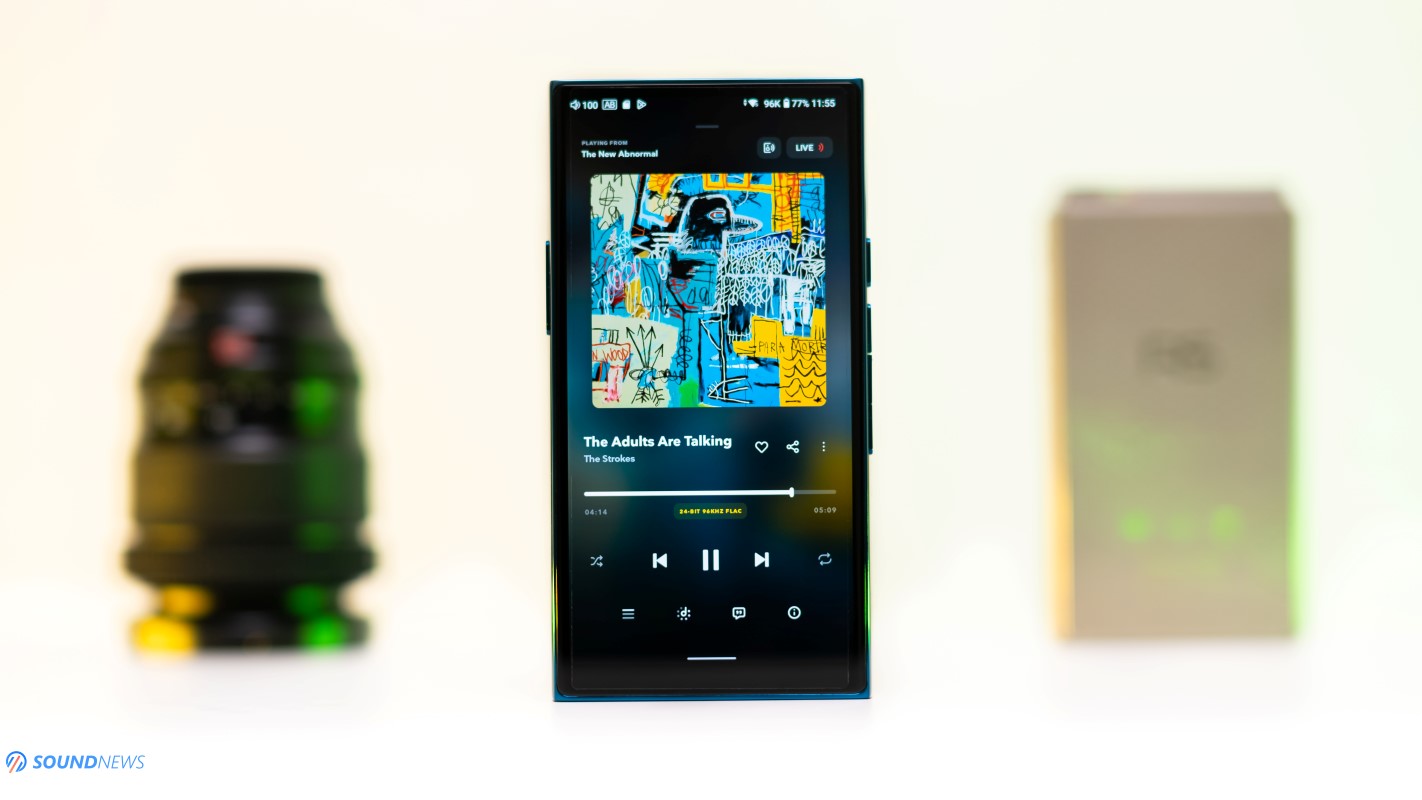
Display
The HiBy R8 II boasts a generous 5.9-inch touchscreen, one of the largest displays you’ll find on a portable DAP. Pushing a resolution of 2160 by 1080 pixels and a pixel density of 409 PPI, this display promises sharp, vivid visuals. Clothed in scratch-resistant Corning Gorilla Glass with an oleophobic coating, it can likely withstand minor bumps and even the occasional tumble (fingers crossed!).
Based on viewing angles, it appears HiBy opted for an IPS panel, known for its color accuracy and wide viewing angles. The display delivers a vibrant and high-quality experience, with an impressive contrast ratio. Colors come alive with impact, and black and white levels are satisfactory, though they might not reach the inky depths of OLED displays or the blinding brightness of flagship smartphones. What truly matters is the crisp, vivid, and sharp image quality, perfectly optimized for the screen’s size and resolution.
Considering the dimensions of the R8 II case, a 5.9-inch display feels like a wise choice. It offers ample real estate for effortless multitasking, web browsing, music streaming, and even light gaming on the go. The sizable screen even makes it enjoyable to catch a few YouTube videos. The R8 II also packs a gyroscope, allowing for screen rotation during web browsing, email replies, or even some light gaming. While the upgraded silicon could handle more demanding tasks, I’d recommend sticking to your smartphone for those activities to maximize battery life. After all, the R8 II excels as a music powerhouse, and preserving its battery for extended listening sessions deserves priority.
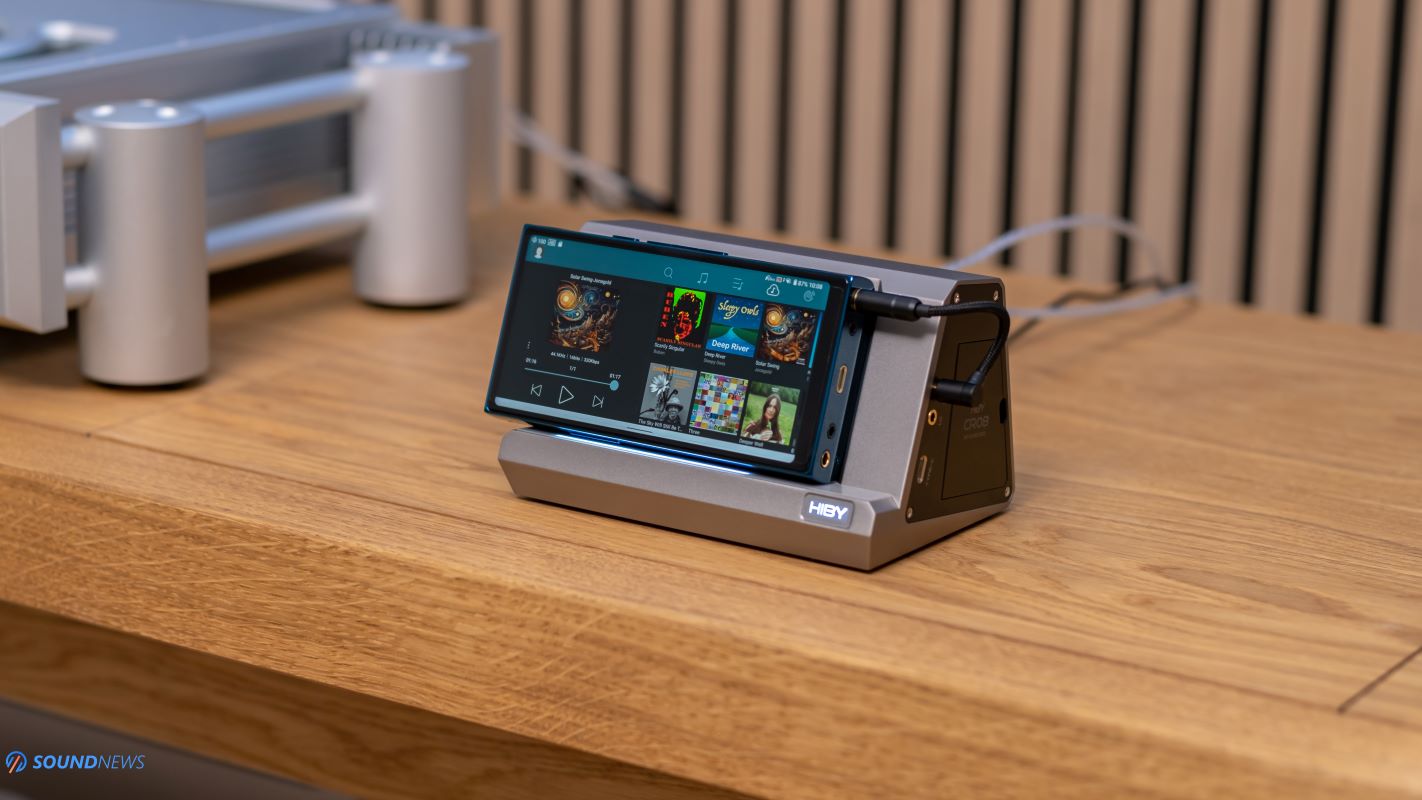
Battery
Speaking of which, the HiBy R8 II demands serious power to fuel its monstrous digital and analog sections, akin to those found in desktop-class electronics. To meet this need, HiBy has equipped it with the largest battery they’ve ever offered in a portable device – a whopping 12,000mAh! This is a significant leap from the already impressive 4,500mAh batteries found in the RS6, R5 II, and R6 III, and even the larger 5,000mAh battery of the R6 Pro II.
Of course, a larger battery capacity translates to longer charging times. But fear not, the R8 II supports the PD 2.0 fast charging standard, allowing for 20W charging. This translates to a full charge from zero to hero in approximately 5 hours.
Now, let’s talk about playback time. HiBy claims roughly 12 hours of continuous music playback on a single charge using the standard 3.5mm jack. This figure dips slightly to 11.5 hours when utilizing the balanced 4.4mm output in Class-A mode with Turbo Mode enabled.
In my real-world testing, pushing the R8 II to its limits with high-gain settings and desktop planar headphones, I managed to squeeze out nearly 9 hours of uninterrupted listening. This is a remarkable achievement, representing an average improvement of an hour and a half over the RS8. Switching to HiBy’s own ZETA IEMs on the balanced output proved even more impressive. Here, with mid-gain settings being more than sufficient, I achieved almost 11 hours of playback – a gain of nearly 2.5 hours compared to the RS8.
On average, my testing revealed a consistent pattern: the R8 II delivers approximately 2.5 extra hours of playback with sensitive IEMs and roughly 2 extra hours with demanding desktop headphones when compared to the RS8. That’s a substantial improvement, making the R8 II a true endurance champion for extended listening sessions.
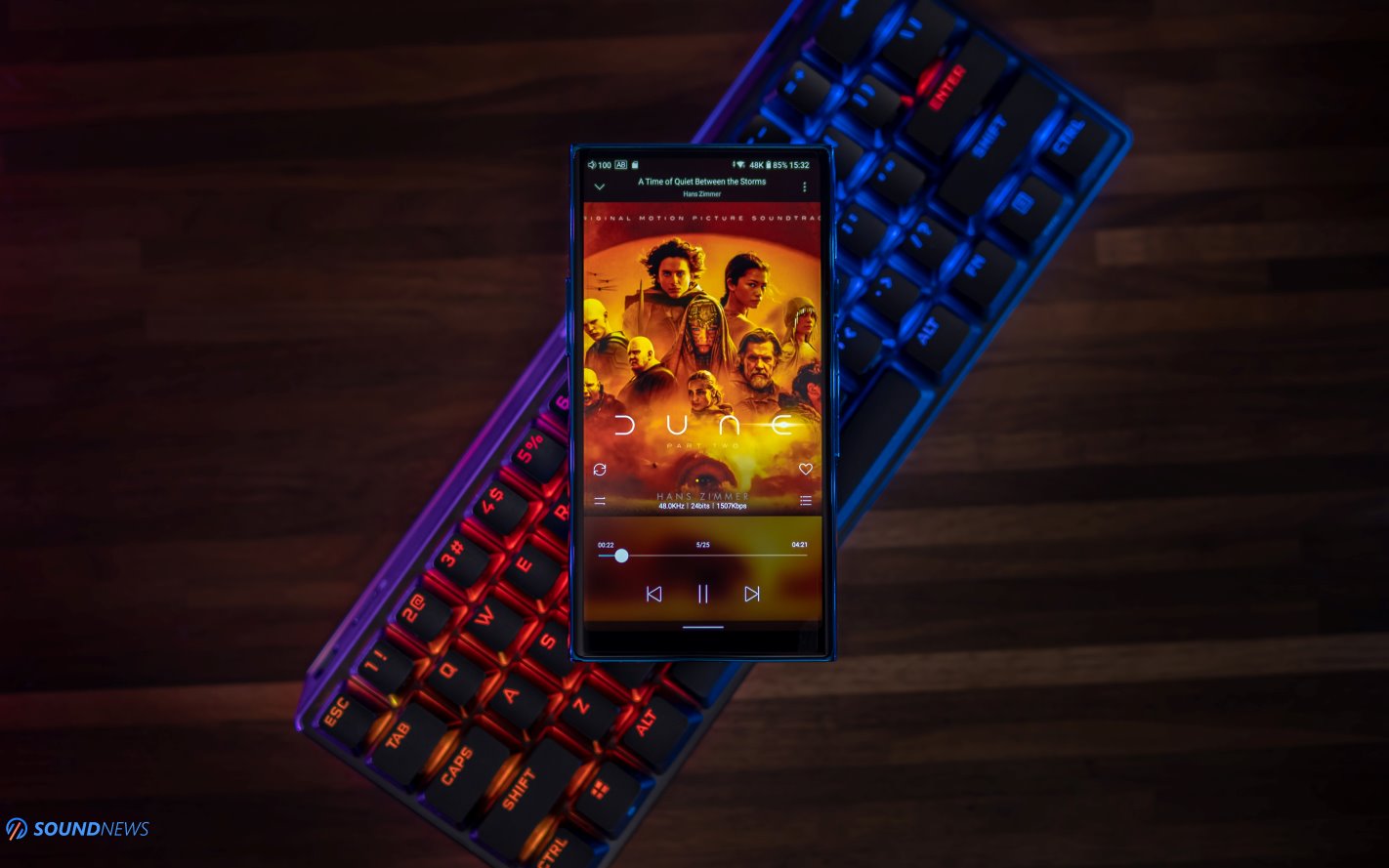
Under the hood of HiBy R8 II
The HiBy R8 II stands out with its forward-thinking approach, boasting the latest Android 12 operating system. Compared to competitors still clinging to Android 10 (looking at you, FiiO and Shanling), the R8 II offers superior futureproofing and longer app support. Under the hood lies the same Snapdragon 665 8-core SoC powering the cream of the crop in portable devices. Now, you might be wondering why a processor released in 2019 finds its place in the R8 II and many other flagship DAPs. The answer is simple: efficiency and cost-effectiveness for low-volume production. While the SD 665 won’t rival a brand-new smartphone in terms of raw speed, it puts the R8 II on par with other top-tier DAPs – which is all that matters in this context.
The user experience is strikingly similar to that of a modern smartphone. Boot times are decent, shutdowns are swift, and most importantly, apps load in a flash. Multitasking is a breeze, allowing you to seamlessly switch between HiBy Music, Qobuz, Tidal, Roon, or Spotify with ease. Even native playback of DSD files happens without a hitch – a significant improvement in responsiveness compared to previous HiBy devices.
As expected, the R8 II grants access to the Google Play Store, opening doors to a vast library of third-party apps. Games, streaming services like Tidal, Spotify, Qobuz, Apple Music – the choice is yours. You can even install mail clients or any other app you desire. My experience with Qobuz and Tidal was flawless, allowing for both online streaming and offline playback – a welcome feature.
In line with their top-of-the-line offerings, HiBy equipped the R8 II with 8GB of RAM, significantly enhancing its multitasking and web browsing capabilities. Running multiple apps in the background doesn’t impact your listening experience in the slightest. While a side-by-side comparison with my Samsung S23 Ultra reveals subtle differences in performance, the R8 II responds to commands remarkably well. Storage capacity is another strong point, with 256GB of built-in ROM offering ample space for your music library. Additionally, the R8 II accommodates microSD cards up to a staggering 2TB, providing nearly endless storage potential. While a default offering of 512GB wouldn’t have gone amiss, the affordability of 1TB microSD cards mitigates this concern.
Now, let’s delve into the heart of the R8 II – its revolutionary digital-to-analog conversion (DAC) technology. Traditionally, DAPs have relied on two main approaches: chip-based solutions and resistor networks. While both deliver excellent audio, they come with limitations. The R8 II shatters these limitations, ushering in a new era with the world’s first FPGA-based DAC implementation – the Darwin-MPA (Multiphase PWM Array). This might sound like complex engineering jargon, but here’s the gist: an FPGA acts like a blank canvas for audio engineers, allowing them to custom-design the digital processing circuitry for unparalleled sound optimization. This ingenious approach bypasses the restrictions of off-the-shelf DAC chips and the intricacies of traditional R2R designs.
The Darwin-MPA builds upon the foundation laid by the Darwin-R2R technology introduced in the R6 and refined in the RS8. Internal delta-sigma modulators oversample input signals by a factor of 128 through the Darwin V2 filter system. This system can emulate various non-oversampling techniques via built-in hardware NOS filters, or you can choose a hybrid approach leveraging the Darwin Ultra filter. Oversampling or non-oversampling is then followed by a cascaded FIR filter design boasting a highly accurate 1024-tap filter. If this detailed explanation evokes memories of high-end DACs from Chord Electronics or Mola Mola, you’re spot on! The R8 II employs a similar approach for D/A conversion, contributing to its unique and captivating sound signature. (For those interested in diving deeper, I’ve included the Darwin-MPA schematics below).
But exceptional sound goes beyond the DAC itself. Precise timing is paramount in high-performance digital-to-analog converters, and here, the R8 II truly shines. Equipped with two femtosecond crystal oscillators, clocked at 90.3168 MHz and 98.304 MHz respectively, the R8 II meticulously preserves timing. This translates to reduced jitter and noise, ultimately leading to a purer, more pristine sonic experience.
The aspect that truly excites me about the R8 II is its headphone amplifier section – unlike anything I’ve encountered on portable devices before. But what exactly makes it so special? A typical setup might utilize dual ADA4625 chips in the preamp stage (voltage amplification). While this is a common sight, the R8 II boasts a groundbreaking innovation: 16 (yes, sixteen!) custom-designed transistors. These transistors can operate in either Class-AB or Class-A mode, minimizing crossover distortion and ensuring instantaneous power delivery – a rare feat in portable audio. Even more impressive is the fact that these aren’t off-the-shelf components; they’re custom-built specifically for the R8 II, signifying HiBy’s commitment to unparalleled performance.
In terms of raw power, the R8 II delivers a mighty 710mW per channel into 32 Ohms through its balanced output, and a respectable 225mW via its single-ended output. On paper, these numbers might not seem earth-shattering, but trust me, this is high-quality power, and I’ll delve deeper into its capabilities in a dedicated section.
For those who still embrace MQA, the R8 II has you covered. It boasts a full MQA decoder, capable of fully unfolding MQA files (16X mode) not only within the HiBy Music app but also in third-party apps like Tidal.
The R8 II isn’t just about wired excellence; it shines in the wireless realm as well. It supports dual-band Wi-Fi (2.4G and 5G), ensuring seamless connectivity. But the true stars of the show are the high-fidelity Bluetooth codecs it supports – not just as a transmitter, but also as a receiver! The R8 II boasts the ability to both send and receive audio in the best possible codecs, including UAT and LDAC. Additionally, thanks to Bluetooth version 5.0, transfer speeds have doubled and the operational distance has quadrupled compared to previous HiBy devices.
For those eager to delve deeper into the R8 II’s intricate workings, I highly recommend checking out the official HiBy website.

Graphical User Interface (GUI)
The HiBy R8 II, despite being a recent release, has already received several software updates. At the time of this review, I’m using the latest firmware version 1.11, and it has proven to be remarkably stable. Unlike some competitors like FiiO and Shanling that offer a dual-boot system (one for offline music and another for Android functions), the R8 II takes a different approach. It leverages a clever technology called Direct Transport Architecture (DTA). This ingenious solution bypasses Android’s default sample rate converter, ensuring bit-perfect audio playback across the entire system. Even cooler, DTA sidesteps sample rate conversion in most third-party apps while using USB audio, essentially achieving bit-perfect output for virtually any app you choose.
Powering the R8 II is HiBy OS, a custom-designed system architecture optimized from the ground up for audiophile-grade processing. Built upon the Android 12 platform, it grants access to the vast Google Play Store, allowing you to install any Android app you desire. But HiBy OS goes beyond simply offering a familiar interface. It unlocks additional functionalities like USB audio input and output, wireless audio capabilities in both directions (input and output), and system-wide audio effects.
As a self-proclaimed HiByMusic devotee, I use it across multiple devices, including the R8 II. It has been consistently updated, with the latest versions boasting a plethora of new features. Some of my personal favorites include Wi-Fi music transfer and HiByCast, which allows you to control the R8 II (tucked away in your pocket, perhaps) using your smartphone or tablet for seamless music management. The integration of Tidal and Qobuz streaming services directly within HiByMusic is another delightful touch, as I frequently utilize both platforms. It’s worth noting that you might prefer to stick to one streaming service over the other. However, both services functioned flawlessly within HiByMusic. If, however, you crave the full, unadulterated experience of either Tidal or Qobuz, you can always install their individual apps directly from the Google Play Store.
HiBy is renowned for its user-friendly interfaces, and the R8 II is no exception. It employs a variety of swipe gestures in different directions to access specific menus, adjust volume, and perform other actions. The Quick Start Guide is an invaluable resource for learning all the available shortcuts and navigating the system with ease. Updating the firmware is a breeze – the R8 II conveniently supports Over-the-Air (OTA) updates, ensuring you always have the latest software running.
Overall, the HiBy OS user interface on firmware version 1.11 feels polished and responsive. Even during playback of demanding high-resolution 32-bit or DSD files, I encountered no stutters or slowdowns. Streaming high-resolution audio from Qobuz and sending it flawlessly to Bluetooth headphones is a delightfully intuitive process. The R8 II’s software experience is simply a joy to use, offering both versatility and stability.
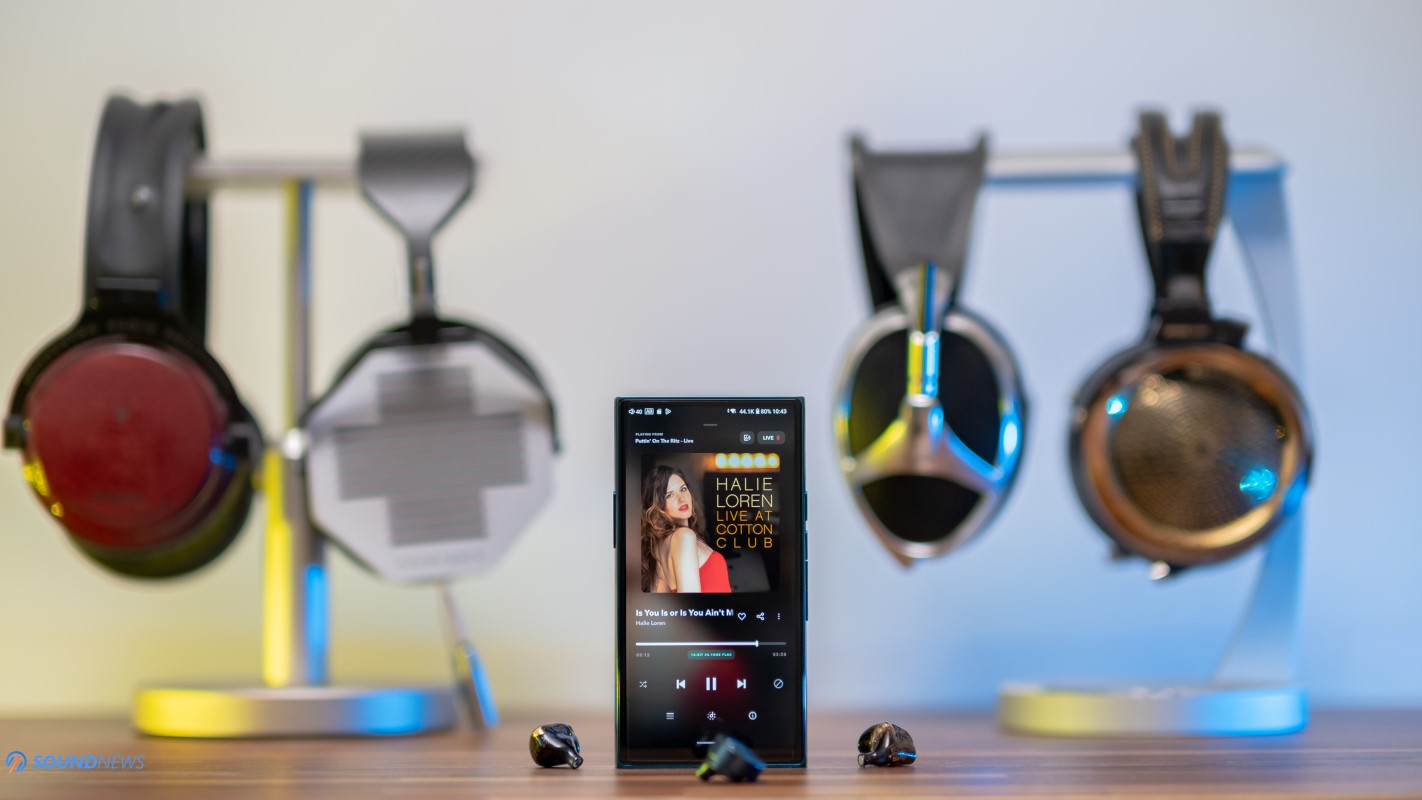
Sound Performance
I. Preliminary Sound Impressions
From the moment I laid eyes on the R8 II’s technical specifications – a 1024-tap FIR filter coupled with a 128x hardware oversampling filter, further enhanced by a Multiphase PWD Array and 16 current mode output programmable chips – I knew it wouldn’t sound like your average DAP. More like a high-fidelity dream team, a harmonious blend of Chord Electronics’ DAVE and Mola Mola’s Tambaqui, reference-grade components that grace my personal head-fi and stereo-fi setups.
Evaluating the R8 II’s sound wasn’t a quick task; it was a meticulous marathon. I pushed it to its limits, even pitting it against HiBy’s top-of-the-line RS8 and FiiO’s finest, the M17 (detailed findings coming in a later chapter – spoiler alert, it’s worth the read!).
But right from the get-go, what truly captivated me was the sheer cohesiveness of the sound. The effortless flow of each note cascading into my ears was mesmerizing, eerily reminiscent of the RS8’s signature while offering a touch more detail and a noticeably faster pace. While I’m certain the Norne Audio Silvergarde S4 cable played a role in polishing the sound for higher-end headphones, the overall result was pure sonic bliss that lingers in your memory for months. This wasn’t just natural; it was downright believable.
Imagine a sine wave sampled at 44.1 kHz using Pulse Code Modulation (PCM) next to a similar wave captured via Pulse Density Modulation, employing single-bit values at a higher sampling rate. You’d quickly discern the inherent smoothness of the single-bit sine wave present in DSD recordings, a quality that closely mirrors an analog signal. This seamless, undulating characteristic perfectly encapsulates the sound of the R8 II. It infuses a sense of effortless flow absent in the best offerings from FiiO and Shanling. Without a doubt, this is the R8 II’s crowning achievement – consistently delivering a sound akin to unamplified analog music, free from glare, grain, or excessive treble resonance that leads to listening fatigue.
Without hesitation, I dove into the treble-heavy tracks that defined my teenage years. I meticulously combed through NuMetal and Groove Metal bands, searching for any potential flaws. Sadly, aside from its substantial size and weight (think formidable self-defense weapon!), I couldn’t uncover a single sonic misstep. The dynamics not only matched the skull-crushing impact of the RS8 but often surpassed it, particularly on fast-paced tracks where timing is king. Unlike its smaller siblings (RS2, R5 II, R6 III, and R6 PRO II), the R8 II didn’t require any special effects, hardware plugins, or MSEB adjustments. It sounded perfect right out of the box, functioning as a musical truth serum that revealed the raw, unadulterated beauty of every track.
After weeks of being enamored with the R8 II, revisiting the RS8 was like a warm reunion with an old friend. The RS8’s signature holographic soundstage was undeniable, but the R8 II held its own surprisingly well. Sure, the legendary layering and spaciousness that made the RS8 famous were still present on the R8 II, just slightly less pronounced. The R8 II still delivered excellent note separation and a beautifully open soundscape, but the RS8 achieved it with unparalleled finesse, operating on a slightly higher plane.
While I still hold the HiBy R6 PRO II in high esteem as the sub-$1,000 DAP champion, its sonic presentation falls a bit short compared to the R8 II and RS8. This is especially true when it comes to the expansive, toe-tapping immersion delivered by ambient chill-hop beats. These two high-end DAPs simply create a sonic world that the R6 PRO II can’t quite match.
Tracks like To Dream is to Forget from Hidden Orchestra‘s latest release (Qobuz / Tidal) perfectly illustrate this point. Even with a multitude of instruments interweaving, each detail was meticulously portrayed, creating a harmonious sonic order. Imagine a symphony of sounds fluttering around you, adhering to a strict spatial hierarchy, akin to butterflies gracefully dancing around your head, yet never touching. This record epitomizes holography, a sonic gem I wholeheartedly recommend to fellow audiophiles. Its depth and breadth are truly spectacular, with instruments seemingly conversing in moments of absolute silence, evoking vibrant sonic hues that remain elusive on mid-to-high-tier DAPs. While the HiBy R6 PRO II is a commendable device, its sonic profile falls short when compared to the R8 II and RS8, particularly when it comes to ambient chill-hop beats, which evoke a toe-tapping, expansive, and immersive experience unparalleled by its peers.

II. R8 II in a Stereo via HiBy’s CR08 Dock
Folks, let me tell you, this D/A converter obsession is real. Most of my reviews, written and video alike, are odes to these bit-bending beasts that transform digital information into funky grooves, head-bobbing beats, and pure listening bliss. No wonder you all started calling me DACMan a while back, right? And after testing and owning some of the absolute top-of-the-line DACs out there, let me tell you this: the DAC in the R8 II is phenomenal. It’s so good, it could easily go toe-to-toe with a high-end desktop DAC in a stereo or head-fi setup.
The clever folks at HiBy know exactly what I’m talking about. That’s why they developed those nifty docks – the CR06 for their mid-range devices and the even more impressive CR08 with active cooling, designed specifically for the RS8. The CR08 works with the R8 II too, although it’s not quite as visually stunning because the R8 II isn’t made of titanium and sticks out a tad. But hey, looks aren’t everything, right?
Since my Chord Electronics DAVE was on loan and my desktop setup was rocking the Rockna Wavedream Signature, I figured the R8 II could hold its own as a stationary streamer and DAC. Controlled by my phone through the HiBy Cast app (which, as the name suggests, casts the R8 II’s screen to your phone – works like a charm with a strong Wi-Fi connection), it plugged right into the system. My top-of-the-line pure-silver XLR interconnects went straight into the Chord Electronics Ultima 3 preamp, followed by the Ultima 5 power amp, feeding a brand new pair of Raidho TD2.2 speakers (a well-deserved Christmas present that took forever to build, mind you).
And let me tell you, the magic of the R8 II’s liquidity and note-bonding skills translated beautifully to my living room. For a moment there, I could have sworn I was listening to a Mola Mola Tambaqui streaming DAC, not the little R8 II by HiBy. The sound was so close to a high-end DAC – incredibly detailed, resolving, and oh-so-natural that for anyone considering the R8 II, I highly recommend grabbing the CR08 and a nice pair of XLR interconnects. This combo can seriously bypass the need for a high-end DAC in either a stereo or headphone setup. And this is no exaggeration. I know my DACs, I trust my ears, and with some of the most revealing speakers on the market, I can always count on them to expose any hidden flaws in a recording.
Now, a word to the wise: the R8 II won’t replace a truly top-notch analog preamp. For the best results, stick with an integrated amp or a preamp-power amp combo. Pairing the R8 II directly with the Ultima 5 power amp worked, sure, and the sound was even sweeter and richer than my usual setup. But the Raidho speakers lost their tight control, and the bass suffered.
Don’t despair if the CR08 dock is outside your budget though. A simple 4.4mm male to dual XLR female adapter cable will give you the same functionality, just without the fancy packaging.
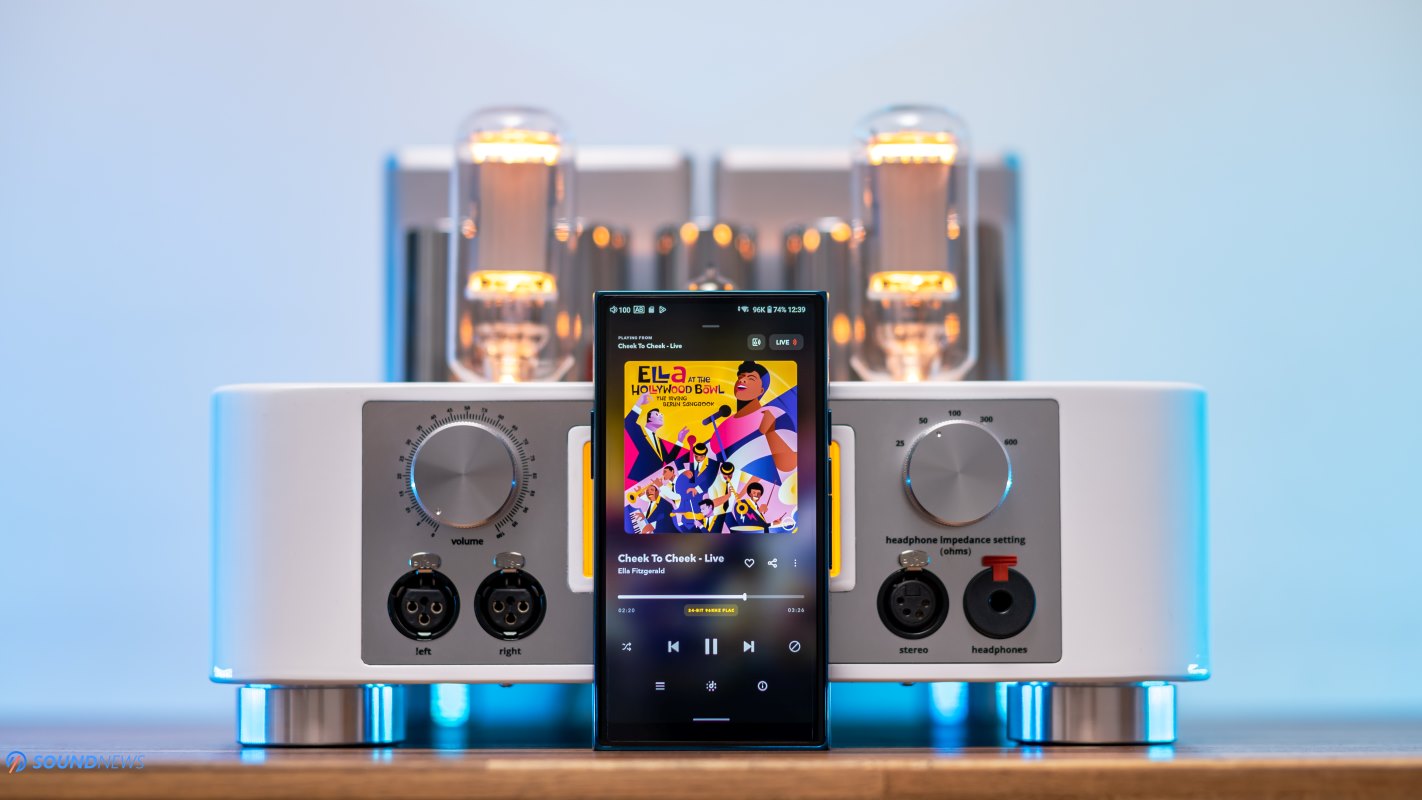
III. Power Output
Alright, audiophiles, let’s talk headphones! We’ve established the R8 II boasts a killer DAC section, but now we’re diving into the world of cans, and here’s where I got to confess something. No matter how detailed and accurate high-end IEMs get, for me, they can’t touch the magic of open-back headphones with those big, beautiful drivers. I’m talking more than just depth, soundstage, and that holographic effect – it’s the dynamics and pure engagement factor that some planar headphones deliver in spades. There’s a certain flow missing with IEMs, something just doesn’t click. Faced with the choice between top-tier IEMs and a mid-fi pair of desktop planar headphones, I’ll always grab the desk-bound cans for a more complete experience.
Now, I’m one of those guys you see roaming around with a DAP hooked up to closed-back headphones. For those globetrotting audio show adventures, the Kennerton Rognir or even better – the Meze Liric 2 paired with a world-class DAP would be my weapons of choice. Lighter travel days call for closed-back Bluetooth headphones streaming lossless magic via LDAC straight from my phone.
Thankfully, as DAPs have gotten beefier, we’ve finally seen a significant power boost, making them capable of driving desktop headphones. The FiiO M15 was the first unit that could finally tame the Meze Empyrean and Audeze LCD-4 back in the day, followed by the Shanling M8 and then the FiiO M17. HiBy went a different route, ditching the typical op-amps for custom transistors biased into Class-A operation. This clever move proved that sometimes, less power can deliver higher quality power in the end.
The RS8 and R8 II share a very similar headphone amp section, using those same custom transistors biased into either Class-AB or Class-A. As far as portable headphone amps go, you’d be hard-pressed to find a better balance between power output and overall tonality. The R8 II has a slightly lower output at 710mW per channel into 32 Ohms compared to the RS8’s 780mW, but in reality, you’ll be hard-pressed to hear the difference when pushing demanding loads like planar magnetics or high-impedance headphones. Think of it this way: volume level 50 on the RS8 translates to 51 (out of 100) on the R8 II, and with less power-hungry headphones, you’ll barely notice a difference.
Now, while the RS8 and R8 II won’t be able to completely tame the mighty beasts like the HiFiMan Susvara, DCA Stealth and Expanse, any of the Abyss headphones, or the current hotness – the ModHouse Tungsten – those are loads that even many desktop headphone amps struggle with.
The only DAP I found that could decently handle the Susvara in DC power mode was the FiiO M17, but that pairing left me wanting more. The M17’s sound is flat and ultra-linear, whereas the Susvara craves a rich and natural presentation.
That lone beast aside, the HiBy R8 II exceeded my expectations with the rest of my planar collection. The best pairings, in no particular order? Meze Elite, Liric 2, Kennerton Rognir, Erzetich Charybdis, HiFiMan Arya Organic, Ananda Nano, and Sennheiser HD800S all sang beautifully with this little powerhouse. Remember, it’s not about raw power, but higher quality power compared to what op-amp-based DAPs typically offer. How can I tell? It’s simple. The sound doesn’t get thin, disengaging, or lack tonal richness. On the contrary! It needs to be dynamically explosive with the right music. You need to feel the air hit your eardrums, the music coursing through your body, delivering a message that resonates. The R8 II achieves this, something sadly missing in many DAPs.
For the nitpickers out there, at my slightly louder-than-usual listening levels (around 90 dB), the Meze Elite, Kennerton Rognir, and Erzetich Charybdis never needed more than 75 out of 100 volume steps on high gain with Turbo Mode engaged and Class-A transistor bias activated. The only headphone that needed a little more juice was the HD800S, reaching 82 for a similar sound pressure level. Even with not much headroom left, there was no drop in energy, something that often happens in the lowest octaves with other players. The bass remained playful and tightly controlled, exactly what I expect from a dedicated desktop headphone amp.
The R8 II should have enough muscle to power your entire headphone collection, as long as ultra-low sensitivity beasts aren’t lurking in there. But fear not, if you absolutely must tame those heavyweight champions, I have a suggestion. Consider pairing the R8 II with the Enleum HPA-23RM. This dynamic duo would be an unstoppable force on the go, capable of driving even the most demanding headphones with ease.

IV. Noise Floor & IEM Pairings
HiBy boasts a noise floor of 5.4 uV on the 4.4mm balanced output and a stellar 3.2 uV on the 3.5mm single-ended output, but frustratingly, they don’t specify if that’s measured in low, mid, or high gain mode. Well, fret no more, because I’m about to put these claims to the test – the hard way.
My arsenal includes several ultra-sensitive IEMs that are notorious noise sniffers. We’re talking about HiBy’s own flagship ZETAs, FiiO’s FX15, and Shanling’s MG800 – these bad boys are like bloodhounds for noise, which makes them perfect for dissecting headphone amp performance (although they see more action in reviews than listening sessions!).
Now, the RS8 and R8 II don’t utilize noise-shaping technologies like THX-AAA or NFCA, which had me worried that some gremlins might be lurking in the circuit boards, introducing unwanted noise and distortion. But hold on to your hats, because HiBy not only managed to match the RS8’s impressive noise floor of 8 uV, but they actually squashed it down by 2.6 uV – all while maintaining (almost) the same level of power through both the 3.5mm and 4.4mm outputs!
With the 4.4mm balanced jack set to low gain, I cranked the volume all the way up, music paused, just to listen for the dreaded hiss. And guess what? Silence. Glorious, beautiful silence. The R8 II aced this test, keeping the noise floor firmly in its place – out of the listener’s way. This is some top-notch engineering, but honestly, I wasn’t surprised at this point. It performed flawlessly with all my IEMs, remaining completely noiseless when using HiBy Music, regardless of volume or output jack. I even switched gears and tested with third-party apps like Qobuz and Tidal – same story. The noise was simply non-existent. It felt like the unit was switched off, leaving a pitch-black void of silence punctuated only by the music itself, seemingly appearing out of thin air.
Here’s the kicker: even with the gain cranked to high, Turbo mode engaged, and Class-A operation activated, I still couldn’t detect any background noise. It wasn’t until I paused the music and pushed the volume to near ear-splitting levels that a faint hiss finally emerged. Thankfully, who listens to sensitive IEMs at those volumes, right? In the end, the R8 II truly delivers on its promise of being an IEM-friendly device.
As for less sensitive IEMs like the 7Hz Timeless AE planars, Kinera SKULD, and FiiO FH9 – the R8 II simply obliterated any noise concerns. And the cherry on top? Even stacking my phone directly on the R8 II didn’t cause a single blip on the noise radar. This makes it a fantastic choice for both on-the-go listening (sharing your pocket with your phone) and desktop use as a high-quality DAC near your wireless router.
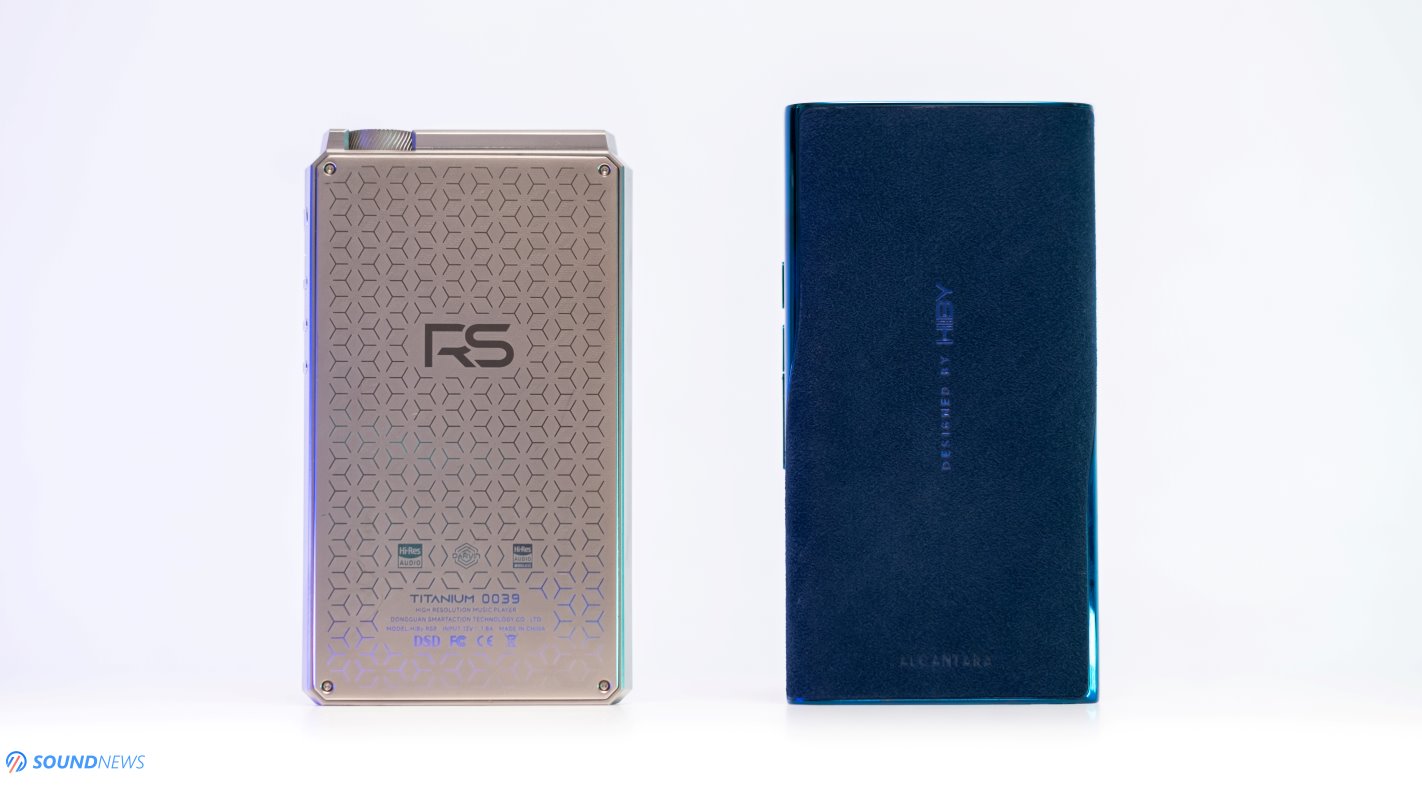
V. Dynamics & Transients
We’re finally diving into the heart of the matter – the R8 II’s handling of speed and dynamics! I’ve been chomping at the bit to get to this chapter, but this little powerhouse deserves its own spotlight when it comes to how it delivers those fast transients and punchy dynamics.
Now, if you read my review of the HiBy RS8, you’ll know it absolutely blew me away with its out-of-your-head presentation. Music truly surrounded you, even surpassing some desktop DAC/amp combos in terms of soundstage, depth, holography, and overall flow. Transients were great, but the RS8 just couldn’t match the lightning-fast performance of the FiiO M17 across genres. While the RS8 packed a solid punch on its own, pairing it with the Enleum HPA-23RM amplifier really boosted the kick in the low end. More importantly, the amp tightened up the timing and decay of notes, something the stock RS8 wasn’t quite there yet on.
Don’t get me wrong, the RS8 was miles ahead of mid-range DAPs like the FiiO M15S, Shanling M7, and HiBy R6 PRO II. But for all its prestige, I didn’t feel the dynamics delivering the knockout blow you might expect at that price point.
The R8 II, however, feels like a whole different beast. After spending days with it, then switching back to the RS8, the difference was night and day. The tempo on the R8 II is noticeably faster, the timing is considerably tighter, and that feeling of needing external help to improve pace, rhythm, and timing? Gone. The R8 kicks and slams with authority all on its own, and remember, we’re talking about driving desktop planar headphones here, not just sensitive IEMs.
There’s no doubt in my mind that the R8 II was built for toe-tappers and headbangers like myself. It injects a serious dose of energy into the low end, making the sound instantly engaging. This is a lightning-fast machine that stops on a dime when needed. Blast through your electronic, pop, and rock collection, and the R8 II faithfully reproduces the precise attack and decay of the drivers, like an invisible hand stopping cymbals and snares with surgical precision. Conversely, a long, sustained piano note will decay naturally, just like the RS8 does with orchestral pieces.
It might sound crazy, but when it comes to pure dynamics, kick factor, fast transients, and note decay, the R8 II plays in a league above the RS8. The only other DAP I see coming close is the FiiO M17.
Speaking of crazy, the newest album by Lupii Lui Calancea – Lelea just dropped on streaming platforms (Qobuz / Tidal). This local folk-rock band is like a guaranteed dopamine and oxytocin rush, no matter my mood. It’s a cultural thing, you know? The music gets in my blood and I can’t help but respond to the call of Calancea’s wolves. It’s my go-to for when I’m feeling drained and need to refocus, and let me tell you, pair it with a glass of red wine, some fresh mămăligă, and some salted sheep cheese – pure bliss for this 39-year-old ciobănaș (that’s shepherd, for those not familiar with Romanian folklore). But here’s the thing: the HiBy R8 II doesn’t just make me tap my foot and connect with the rhythm of my ancestors, it unleashes a torrent of dynamic energy that takes my imagination on a wild ride. Ho Lee Schiit, indeed!
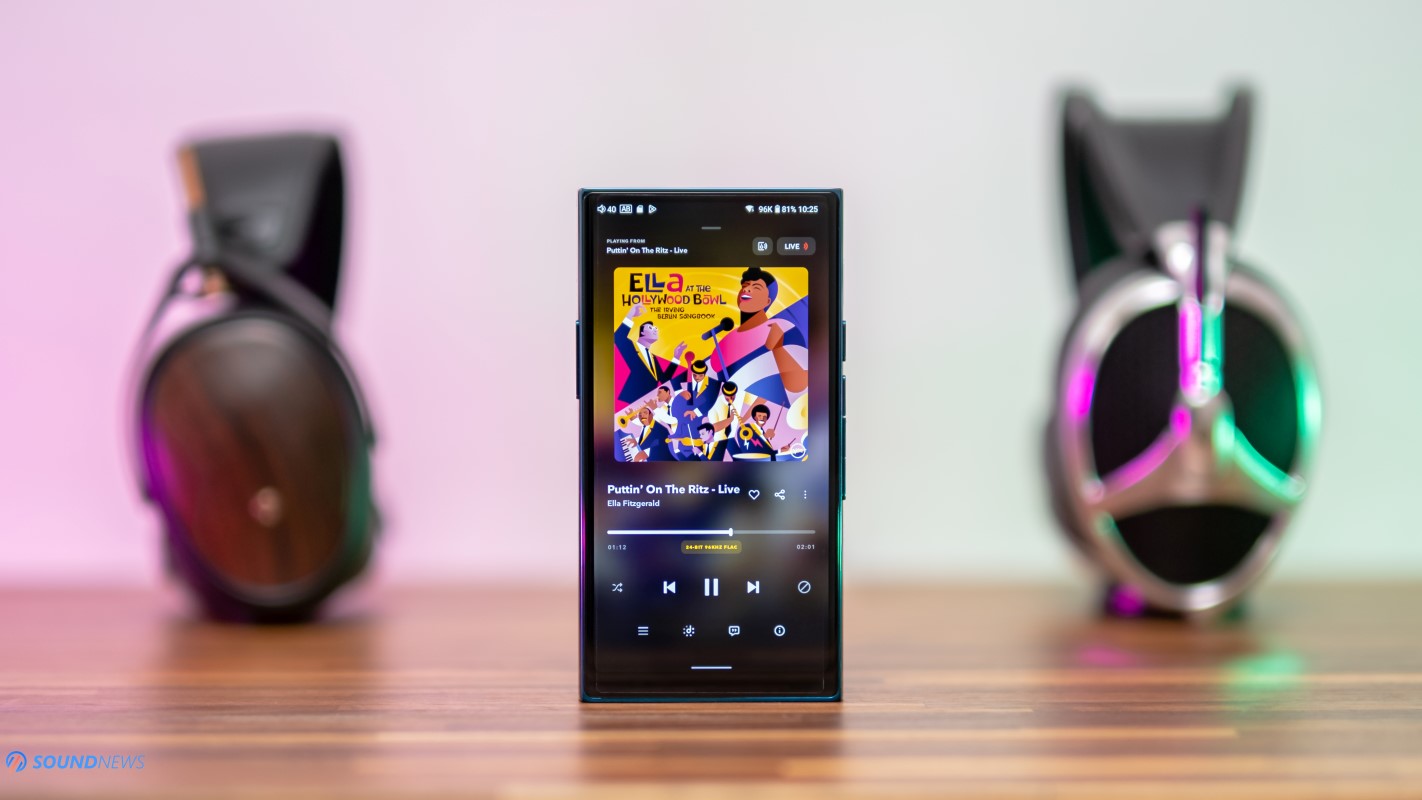
VI. Resolution & Transparency
If you follow HiBy and their developments, then you already witnessed consistent resolution jumps when moving from their entry-level to mid-fi and then high-end DAPs. Remember the RS2? Lots of texture, but not exactly a high-resolution monster. Unearthing those micro-details paled in comparison to its big brother, the RS6. The RS6 brought a layer of refinement and separation that the RS2 missed, and then the RS8 kicked things into overdrive. Resolution, transparency, layering, depth, soundstage – pretty much everything was cranked to eleven.
Here’s the thing about R2R ladder DACs, like the one in the RS8. By their very nature and PCB design, they have a longer signal path, a more complex layout, and tons of resistors constantly switching positions (R and 2R). All that can introduce tiny timing errors, no matter how clever the engineers are with their FPGA reconstruction tricks (which, by the way, the RS8 uses). The bottom line? Simpler, off-the-shelf chip-based DACs can deliver similar levels of resolution for less cash.
In simpler terms, crazy-high resolution with R2R DACs comes at a crazy-high price point (please don’t look up how much my Wavedream Signature cost me), and that level of detail isn’t always necessary. So, when I switched from the RS8 to the R8 II, the first thing I noticed was the leap in dynamics, followed by timing and then resolution. This is where my listening panel – and by unanimous decision – declared the R8 II the clear winner in the resolution department.
Yup, you get more happening on the micro-level. More nuances were dancing on the surface of the music. More subtle details emerged from the shadows. Contrast is dialed way up, and the dynamic range expands, putting more space between the quietest whisper and the loudest roar. I swear, I couldn’t believe my ears at first. New sounds were blooming from nowhere, and the resolution was already pushing my own desktop DACs to their limits.
Now, the R8 II doesn’t quite dethrone the ultra-resolution kings like the Chord Electronics DAVE or the Rockna Wavedream Signature, but damn it comes close! It’s so close, in fact, that I see myself using it as a desktop DAC replacement. That’s why HiBy created the CR08 dock – it’s a shame to waste all that power on just IEMs or portable headphones. Don’t be shy, pair it with your resolving desktop cans, or even your integrated amp and speaker setup. That’s exactly what I did, and the sound was clean, resolving, detailed – it built the perfect calm before the storm, overflowing with liquidity and rich textures. What’s not to love?
Cue Go Insane (Live 1997) by Fleetwood Mac (check it out on Qobuz / Tidal). My ears were immediately glued to those aggressively plucked strings. They were thick, they were real, their vibrations filled the room to the point of being almost overwhelming at first. Lindsey Buckingham himself once said, “I’m not a finesse guy, I’m more damn-the-torpedoes,” and that certainly applies to his guitar playing. It’s hyper-aggressive, but there’s an undeniable precision and taste to his unique fingerstyle approach. And the results are undeniably dazzling. This live performance makes you want to stop everything and just soak it in. But the most impressive part wasn’t just the ultra-realistic string plucking, it was the effortless way it was all presented. The R8 II didn’t just showcase the detail, it delivered the emotion with equal precision.

VII. Soundstage & Imaging
Alright folks, nearing the finish line here, and it’s time to talk imaging and soundstage. This is where HiBy’s RS8 has historically reigned supreme, sounding more like a desktop setup and even surpassing some dedicated desktop rigs in this department.
The R8 II boasts a channel separation of 76 dB on its standard 3.5mm jack and a mighty 93 dB on the balanced 4.4mm output. Now, crank up some rock or electronic tunes at 90 dB on the regular 3.5mm jack, and you might notice some channel interference. This can shrink the soundstage and make everything feel a bit cramped. But switch to the balanced output, and those channels separate beautifully, widening the soundscape in all directions and creating a clear 3D map of the music. Listen closely with a good pair of open-back headphones on the balanced connection, and you’ll swear the sound is expanding outwards, even adding some depth information. It’s almost like transforming regular stereo recordings into some kind of binaural magic. To unleash the full potential of the R8 II, investing in a balanced cable with a 4.4mm jack is a no-brainer. The higher the cable purity, the cleaner the sound will be. And if you’re driving open-back desktop headphones with this setup, prepare for some serious head-swiveling moments – the soundstage will have you looking around like someone’s sneaking up on you!
Throw on a pair of open-back planar headphones like the Meze Elite, or better yet, the Erzetich Charybdis (which still holds the crown for the biggest soundstage I’ve heard from open-backs), and live recordings come alive on the R8 II. The sound expands effortlessly, everything floats around you, and you can practically pluck instruments out of thin air with your mind. If it sounds like I’m gushing about the soundstage, depth, and layering, well, that’s because I am. Now, HiBy’s RS8 is still a hair more holographic and pinpoint-accurate when it comes to instrument placement. In my experience, it remains in a league of its own. The R8 II’s soundstage might be a touch tighter and slightly less expansive, but that also translates to a more focused presentation – something FiiO’s M17 also exhibits. Mid-to-high-tier DAPs like the Shanling M6 Ultra, M5, FiiO M15S, and HiBy R6 PRO II all come close to the R8 II, but none quite surpass it, no matter the music you throw at them.
Here’s a thing I noticed: sometimes the RS8 feels like it boosts the scale of music, adding extra layers for a much deeper sound compared to chip-based DAPs. This is something the Rockna Wavedream Signature does in a more vivid way as well. The R8 II doesn’t quite achieve that level of vividness as easily, but you can still engage the Sound Field plugin. This hardware-level trick utilizes internal FPGA processing to push the sounds a bit further back. Out of the box, the R8 II doesn’t present itself as a laid-back, larger-than-life-sounding machine. But with a little tweaking of the MSEB settings and some hardware plugin action, you can definitely sculpt it into that kind of performer.

Frequency Response
The folks at HiBy haven’t skimped on customization options for the R8 II. They’ve loaded it up with a bunch of MSEB settings that let you tailor the frequency response to your exact preferences. But wait, there’s more! They’ve also thrown in a full-fledged Parametric Equalizer (PEQ) for even more granular control. Want to boost the low end? Carve out some harsh treble? No problem. You can even import and export PEQ profiles for easy switching. And the best part? This PEQ works globally, not just for the HiByMusic app – it affects everything you listen to, including streaming services and YouTube.
Now, I’m a bit of a purist, so I’ll be focusing on the R8 II’s stock performance, but it’s worth keeping in mind that with all these options, you could have two R8 II’s sitting side-by-side sounding completely different.
VIII. Bass
The R8 II’s bass is what truly sets it apart from HiBy’s previous offerings. It’s a perfect marriage of quantity and quality, delivering some of the most satisfying low-end I’ve heard. The only other DAP that comes close in terms of technicality and punch is the FiiO M17, but the R8 II edges it out with a more natural presentation.
Sure, some might say the bass is a touch elevated compared to a perfectly flat response, but that’s how high-end DACs tend to handle things. My flagship units all add a little extra oomph when the music calls for it. The R8 II can also slightly influence the tonality of your headphones or IEMs. Take the ZETAs for example – they have impressive low-end, but they need a source that can keep them in check, otherwise they can get flabby. The R8 II in Turbo Mode with Class-A transistor bias unlocks the full potential of the ZETAs, showcasing their technical prowess while keeping their tri-brid design under tight control. Similarly, HiFiMan headphones like the Ananda Nano and Audivina benefit from a stronger low-end kick, while more neutral-sounding options come alive with a touch of added life. And for those with bass-heavy cans or IEMs, the R8 II does a fantastic job of controlling any low-end excess. Tracks like Loreena McKennitt’s Marco Polo (Qobuz / Tidal) are a perfect example – the piece is full of midrange instruments building a beautiful 3D soundscape, but the R8 II’s revitalized low-end adds a whole new layer of energy without overpowering the rest of the mix.
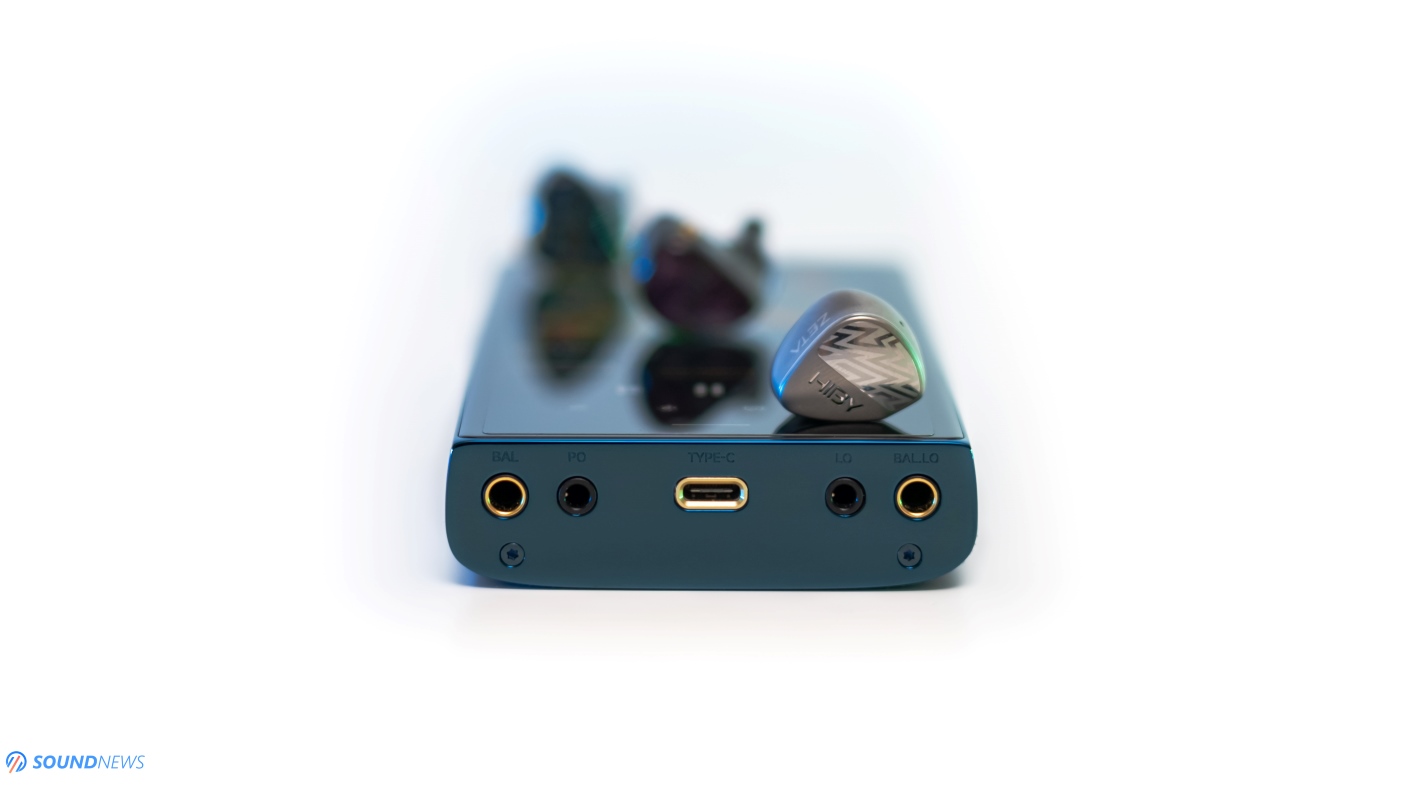
IX. Midrange
Moving into the midrange, I can’t help but be reminded of HiBy’s RS8. There’s a touch of lushness here, but it never strays from a faithful representation of the mid tones. The R8 II doesn’t artificially boost this region, but it does deliver a denser and weightier tonality compared to its mid-range siblings like the R6 PRO II. It also boasts higher saturation, bringing textures to life and imbuing instruments with a wealth of emotion. There’s no harshness or dryness here – everything strives for a realistic presentation with just a hint of warmth added for a touch of life. Switching from the R8 II to a mid-level DAP like the RS2 immediately reveals a loss of color and beautiful overtones. But the real magic of this midrange isn’t just about resolution, texture, or tonal balance – it’s the way all these elements come together to create a truly realistic representation of the music. It’s not slow or fast, forced or laid-back – it just sounds right. I spent countless nights lost in acoustic music sessions with the Meze Liric 2, completely forgetting about sleep thanks to the R8 II’s intoxicating midrange. It simply delivers, regardless of the genre. Male vocals have the right amount of weight, female voices convey a full spectrum of emotions – there’s nothing to fault in this midrange performance.

X. Treble
The treble on the R8 II walks a fine line – it avoids being offensive, yet maintains cleanliness and impressive extension. Class-A mode takes this a step further, smoothing things out for an even more effortless and natural listen. I cranked up some metal on the HiFiMan Audivina in Class-A mode, and the horns soared through the mix without a hint of harshness or listening fatigue. This is exactly the kind of treble I crave, the kind that lets you breeze through entire albums like butter on a hot pan.
Now, I’m a sucker for detail-oriented headphones, but adding too much treble energy to them can throw the tonal balance into chaos. Thankfully, the R8 II delivers ample extension without succumbing to the fatiguing treble ringing I experienced with the FiiO M17. Bright-sounding headphones can breathe a sigh of relief – the R8 II won’t magically transform them into smooth, laid-back performers, but it will definitely make them easier to live with.
There’s more than enough treble extension here, reaching well beyond the limits of human hearing. But crucially, there’s no excess or artificial sharpness. The R8 II doesn’t try to impress you with overly sculpted contours or aggressive leading edges – it leaves those well enough alone to maintain a pristine tonal balance. Achieving this level of refinement in a compact device is no easy feat, but after years of experimentation, it seems HiBy has cracked the code. Here’s hoping they stick with this winning formula – a sound that’s more alive and way less artificial.
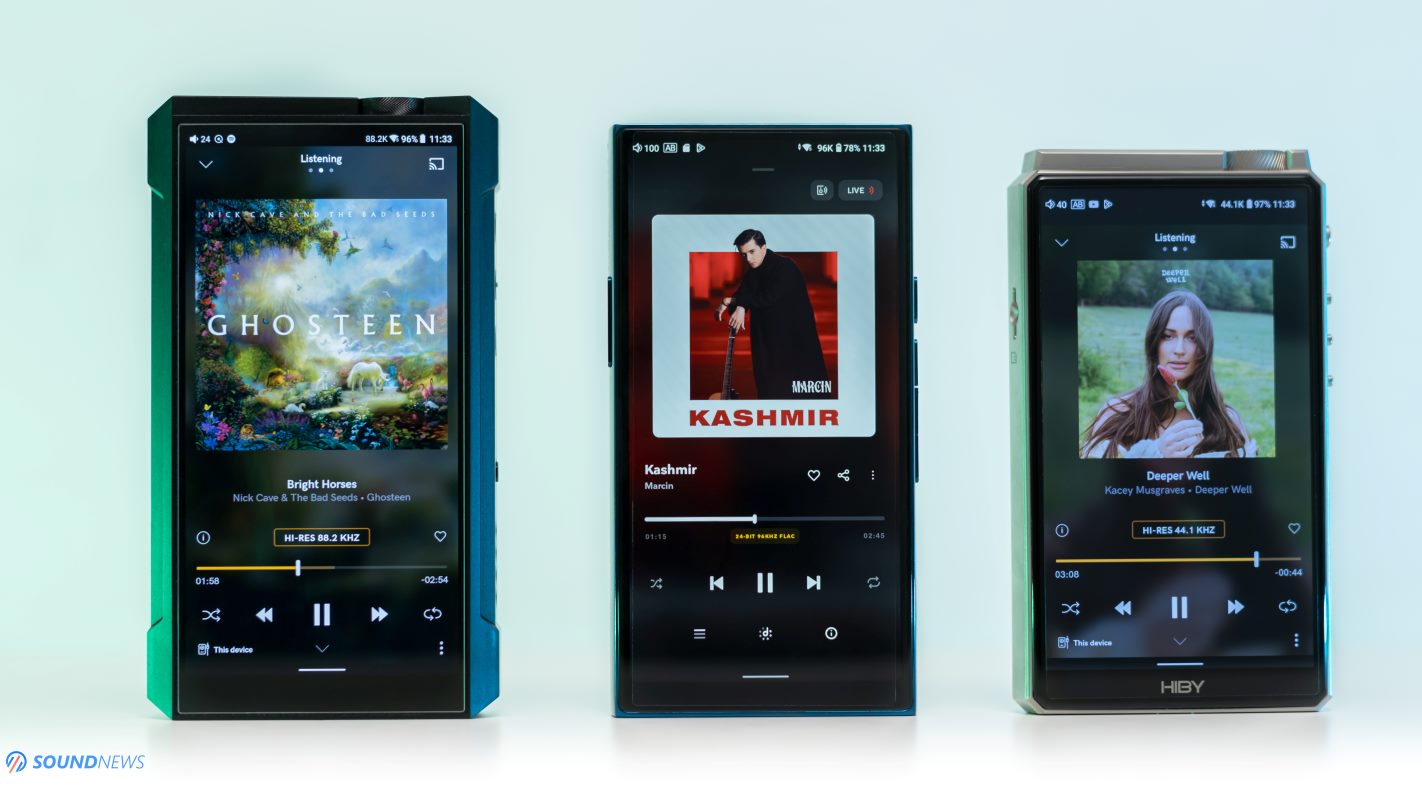
XI. Comparisons
HiBy RS8 ($3.299) VS HiBy R8 II ($1.999) VS FiiO M17 ($1.799).
Now that we’ve thoroughly dissected the R8 II’s sonic performance, let’s see how it stacks up against its rivals: the HiBy RS8 (big brother, $3,299) and the FiiO M17 ($1,799). For these comparisons, I follow a strict ritual: mornings, after a hot shower, a double dose of Audispray, a steaming cup of coffee, and meticulous volume matching at 90dB using a decibel meter. Why? Because a primed body and mind lead to the most accurate evaluations.
Round 1: Built to Last
All three contenders are built like tanks – hefty CNC machined bodies, mostly aluminum (the RS8 gets a fancy titanium upgrade). But when it comes to user-friendliness and sheer comfort, the HiBys take the crown. The RS8, for example, feels fantastic in hand (weight aside) with all the buttons neatly tucked on the right side and ports tucked away on the bottom. The FiiO M17, on the other hand, boasts a double dose of buttons scattered across both sides, along with 4 switches – a behemoth that’s more at home on a desk than in your pocket. As for looks? The R8 II easily steals the show with its luxurious Alcantara back that adds grip even without a case. Style points go to the R8 II, followed by the RS8, with the M17 bringing up the rear.
- HiBy R8 II: 10
- HiBy RS8: 9.5
- FiiO M17: 8.5
Round 2: Feature Frenzy
While the M17 throws in an Ultra-High Gain setting when hooked up to DC power (making it a stationary DAC/amp combo), both the RS8 and R8 II offer a wider array of sound optimization tools. We’re talking hardware plugins, MSEB settings, Class-A/AB bias options, Turbo Mode, and a full-fledged Parametric EQ. The R8 II reigns supreme with the most settings to explore, followed by the RS8, then the M17, which is pretty basic beyond gain and EQ adjustments.
- HiBy R8 II: 10
- HiBy RS8: 9.5
- FiiO M17: 8.5
Round 3: Power Play
Raw power? The FiiO M17 takes the gold medal here, being the undisputed powerhouse amongst portable DAPs today. It cranks out a whopping 1.5 Watts per channel on battery power, and a ridiculous 3 Watts when plugged in with DC power. That kind of muscle can drive even the most demanding low-sensitivity planar magnetic headphones. The RS8 offers roughly half that power, and the R8 II falls slightly behind.
- HiBy R8 II: 8
- HiBy RS8: 8.5
- FiiO M17: 10
Round 4: Timbre Tango
When it comes to natural timbres, the RS8 is the undisputed king. Now, I haven’t had the chance to play with Cayin’s flagship N7 and N8 II, but based on my experience with the N6 and N8, the RS8 still holds the crown for those who prioritize lifelike textures. The R8 II comes incredibly close, some might even prefer its smoother presentation compared to the RS8’s subtle liquidity. But for sheer, untamed naturalness, the RS8 remains the champion. The FiiO M17, on the other hand, falls short on emotion, texture, and overall timbre.
- HiBy R8 II: 9.5
- HiBy RS8: 10
- FiiO M17: 8
Round 5: Staging the Spectacle
Soundstage, layering, and depth – here’s where things get interesting. Combining a top-notch R2R ladder DAC with a fully discrete Class-A amplifier stage, the RS8 takes the cake for the most impressive soundstage I’ve encountered in a portable DAP. It creates this spacious, airy atmosphere where music seems to breathe at arm’s length. Even complex, crowded tracks become clear and uncluttered on the RS8. The M17 and R8 II go toe-to-toe here. The M17 offers a wider soundstage (think leftmost instrument to rightmost instrument), while the R8 II excels at holography. It’s a close call, and ultimately comes down to personal preference – some might favor width, while others crave depth.
- HiBy R8 II: 9
- HiBy RS8: 10
- FiiO M17: 9
Round 6: The kicks below the belt
Now we enter the realm of transients and dynamics. Here, the FiiO M17 emerges as the undisputed king of kick-starting your eardrums. Its lightning-fast response is simply unmatched – it’s like a sonic sledgehammer, perfect for those who crave raw power. Electronic music on bass-heavy IEMs can be almost painfully energetic with the M17.
Speaking of impact, both the R8 II and M17 tie for bass slam and dynamic oomph. The R8 II is also a visceral and punchy performer, but it can’t quite keep up with the M17’s breakneck speed. This is a limitation inherent to R2R ladder DACs, with their resistor networks influencing the timing and thus, impacting speed. Don’t get me wrong, the RS8 is no slouch – it still packs a mighty punch, but it lacks the lightning-fast reflexes of the M17 and R8 II.
- HiBy R8 II: 9.5
- HiBy RS8: 8.5
- FiiO M17: 10
Round 7: Unveiling the Details – A Double Knockout?
Transparency and detail retrieval – arguably the toughest test. All three contenders are highly resolving, making it a real nail-biter. In fact, the M17 and R8 II go toe-to-toe, initially seeming like a double knockout. However, subtle differences emerge.
The M17 leans towards emphasizing the treble, creating an artificial boost in perceived micro-detail retrieval. It also sculpts notes with sharper contours, which might trick some listeners into believing it’s the more resolving option. But there’s more to the story. The R8 II, while avoiding emphasis and treble sharpness, excels at revealing the texture of the music, like unearthing hidden inner details. With the R8 II, I can feel the natural decay and vibration of wood instruments – a level of realism that the M17 can’t quite match.
Here, it comes down to personal preference. Some might gravitate towards the M17’s apparent sharpness, while others, like myself, will appreciate the R8 II’s natural, effortless presentation. The RS8 joins the party with even richer inner texture and detail, but it falls slightly behind in the micro-detail retrieval race compared to the other two. While the FPGA partially corrects errors in the ladder, it can’t fully recapture the lost information. The difference is minor, but it’s there.
- HiBy R8 II: 10
- HiBy RS8: 9.5
- FiiO M17: 10
The Final Countdown
Now, let’s crunch the numbers (without factoring in price):
- HiBy R8 II: 66 points
- HiBy RS8: 65.5 points
- FiiO M17: 64 points
It’s a close race, but the HiBy R8 II edges out the competition. The RS8 holds its own as a truly special device, particularly for those who appreciate its unique and complex engineering. However, for pure, unadulterated power and speed, the FiiO M17 remains a force to be reckoned with.
This entire evaluation focused solely on sound performance, without a single mention of technical specifications. Why? Because throughout this journey, the HiBy R8 II doesn’t boast the most impressive specs on paper, still it emerged as the superior performer. This serves as a reminder that specs are just one piece of the puzzle – listening is the ultimate test.
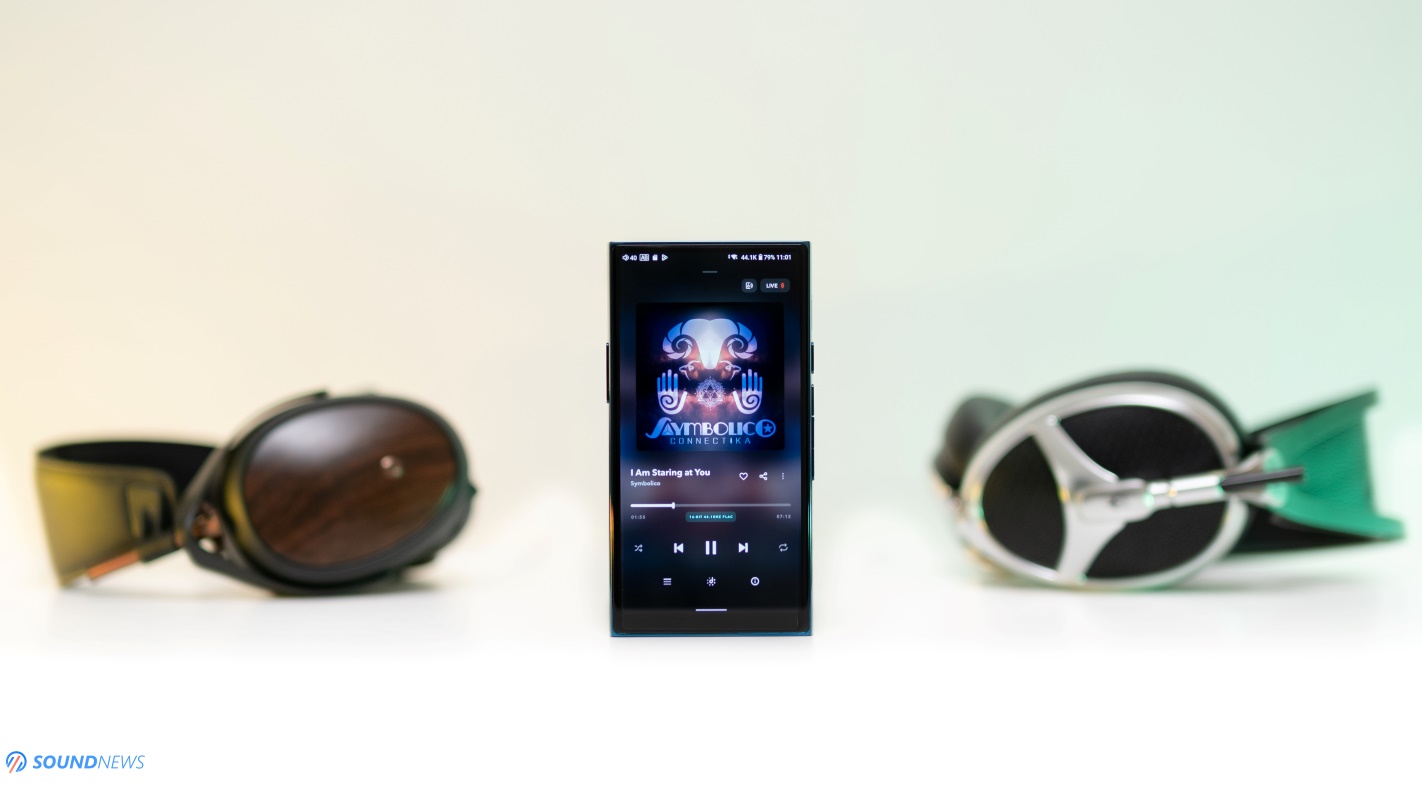
My Conclusion
I hope to reincarnate as a Maine Coon tomcat in my next life, spending nine lives on whatever pleases my whiskers. Unfortunately, I’m a human being who has a single life to live and life’s too short for compromises, that’s my motto. Why settle for mediocrity when you can invest in something truly special, something that elevates your listening experience for years to come? Sure, some folks prioritize price over quality, but I’m a firm believer in the long game – upfront investment can reap sonic rewards down the line.
The HiBy R8 II embodies this philosophy perfectly and as hard as I have tried, nothing bothered me sound-wise in three weeks of testing. Subjectively speaking, we have the coolest-looking DAP out there, the grippiest one for sure, we have excellent connectivity options, a big screen, and a fast-moving SoC for a DAP of this caliber. The sound will impress a music lover and a hardcore audiophile, as this little fellow is both technical and musical sounding at the same time. Music isn’t just cleaned up, de-noised, and beatified, but it becomes engaging, visceral, and quite emotional. Don’t get me started with sound enhancements that R8 II is equipped with, as I truly believe HiBy has been playing a forever-alone game for quite some time. We don’t get just a regular EQ, but a Parametric one, highly complex MSEB settings are also on board, hardware plugins, transistor bias, and Turbo Mode which has nothing to do with gain – things that no other DAP manufacturer implemented as of yet.
The best part about the R8 II? I do not see it as a downgrade from their TOTL RS8 and more like a side step, a different flavor if you will, trading sound width and layering with a higher resolution, with a faster pace, rhythm, and timing, and depending on your preference, you might like the R8 II or the RS8. All of this is being offered at a considerably lower price versus the RS8 and it might sound out of place, but I honestly believe R8 II isn’t only worth its asking price of $1999, but it becomes a no-brainer considering its use cases and final performance.
I even put the R8 II through its paces as a standalone desktop DAC using the CR08 dock – and for two whole days! Now, let me tell you, this is coming from someone who uses some of the most revered DACs out there. Sure, it didn’t quite match them in pure resolution, spaciousness, and timing, but it still outperformed plenty of DACs in its price range. It did the music justice, faithfully converting those digital zeros and ones into captivating sound waves.
So, does the R8 II belong in the company of the best? Absolutely! It delivers a different sonic experience than the RS8, but its performance is equally top-notch, earning it our coveted Gold Award. HiBy, if you’re listening (and for the love of Odin, I hope you are!), please turn your attention to desktop components! I’m chomping at the bit to experience an R2R or FPGA desktop DAC from you, paired with a fully discrete Class-A amp stage. Throw in a Roon endpoint and an Ethernet port, and you might just disrupt the entire market. Heck, I might even celebrate with a keg (or two) of beer! May Odin hear my prayers, HiBy, please make this dream a reality.
The HiBy R8 II is available for purchase directly from HiBy’s website. If you take the plunge and have any burning questions, feel free to drop a line in the comments section below. That’s all from me for now. Live a little, listen to some great music, and I’ll see you next week. Sandu Signing Out!
PROS:
- Solid as Iron Man, top-notch build quality, you can get a nicer build quality than this
- Excellent ergonomics and button placements, the learning curve is minimal
- The bundled case is fantastic, adding more Alcantara goodness
- Unlocked Android 12 with full Google Play Store support
- Excellent resolution and viewing angles for an IPS display, plus 5.9” feels just right for a premium DAP
- 8 Gigs of RAM made it a multitasking powerhouse, while the 256 Gigs of built-in ROM memory could store a few albums until you ultimately decide to get a 1TB card
- Considering how much tech was cramped inside, the battery life didn’t disappoint
- A true software-defined FPGA DAC infused with HiBy’s knowledge. Isn’t that dope? It sure is
- Fully discrete (transistor-based) power amp stage biased into Class-A operation feels like a dream come true
- With an overwhelming selection of MSEB settings, Plugins, Presets, and Darwin enhancements, you have the power to transform its tonality upside down, this is a very customizable unit sound-wise
- Sounding real and life-like most of the time
- Fun, punchy, and lively sounding in Class-A and Turbo Mode, even more compared to its bigger brother
- Could drive a wide variety of headphones, including desktop dynamic and planar headphones
- Noiseless with ultra-sensitive IEMs
- Brightness-free sound with zero listening fatigue
- Offers an impressive soundstage and depth, one of the airiest ones for sure
- Could replace a desktop DAC for a head-fi or stereo-fi rig
- Don’t hate me for writing this down, but it’s worth every single penny
CONS:
- It’s pocketable, but it’s on the heavier side
- Not the most powerful DAP out there, it couldn’t drive all my headphones
- 512 Gigs of ROM memory would be cool to have
ASSOCIATED EQUIPMENT:
- HiFi Racks: Woodyard Suspended Triple & Baby Modular
- DACs: Rockna Wavedream Signature XLR, Chord Electronics DAVE, Gold Note DS-10 Plus,
- DAPs: HiBy R8 II, RS8, R6 PRO II, FiiO M17, M15S, Shanling M6 Ultra, M7
- Wireless Streamer & Music Server: Rockna Wavedream NET, EverSolo DMP-A8
- Headphone Amps: Trafomatic Primavera, Enleum AMP-23R, HPA-23RM, Ferrum OOR + HYPSOS, Burson Soloist 3X GT, Flux Lab Acoustics Mentor X2
- Preamps: Chord Electronics Ultima 3 Pre
- Power Amps: Chord Electronics Ultima 5, Burson Timekeeper 3X GT (x2)
- Loudspeakers: Raidho TD 2.2
- Full-sized headphones: HiFiMan Susvara, Audivina, Ananda Nano, Arya Organic, Erzetich Charybdis & Phobos, Meze Elite & 109 PRO, Sennheiser HD800S, Kennerton Rognir, Apos Caspian, Sendy Peacock & Apollo, HarmonicDyne Poseidon & Zeus Elite, Moondrop Venus, FiiO FT5 & others
- Interconnects: Crystal Cable Reference2 Diamond, QED Reference (x2), Topping TCX1 (x2)
- USB Cables: Supra USB Excalibur (x2), Chord C-USB, Matrix Hi-Fi USB
- HDMI Cables: AudioQuest Diamond
- Speaker cables: Kimber PR8, Audioquest Type4
- Power Cables: Isotek EVO3 Premier (x3), iFi Audio SupaNova (x3)
- Balanced Isolation Power Conditioners: PLiXiR Elite BAC1500 (stereo setup), KECES IQPR 1500 (headphone setup)


